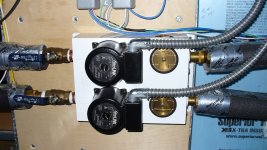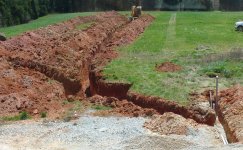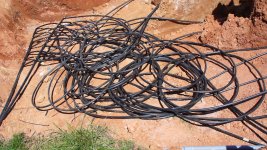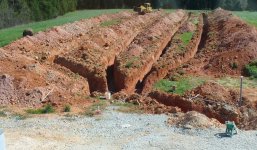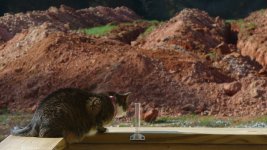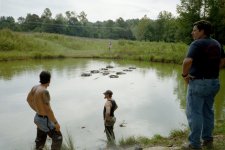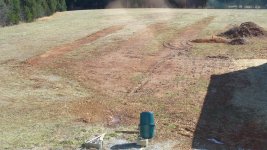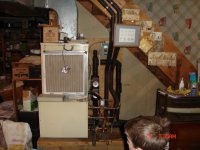Hi Everyone,
I have been reading this thread with interest. I purchased my property six years ago (almost) and it has a Waterfurnace Geo unit, working on an inground fixed loop system.
Since the system was already installed I don't know the design criteria or the cost - the previous owner never came through with supplying household documents etc. and has since died, so I am SOL. However, my experiences might be of some use to anyone considering such a unit.
The system has pipes buried 8ft down and I think my unit is a 5 ton. I live in Canada where the ambient temperatures vary from -45C/F in winter through to 100+F or 40C in the summer on occasion. The house is well insulated with thicker than 6"studs - closer to 8". There is double glazing but only 5/8" gap between panes (sealed units) I think. I have installed an extra window either outside, covering whole unit (plexiglass) or plastic sheet inside house. This greatly reduces futher heat loss. I keep the house at a steady 70F and heat individual rooms as needed - main bedroom is over the garage and needs a little more heat and use a fan heater as needed.
As the system was already installed, I can only guess on the cost - at around $15,000. Previously heating was done with propane, so the bulk of the ductwork was already installed. I use the propane furnace as a back up in the event that the geo unit breaks down - and it has three times, once fan motor speed control and second time printed circuit board, third time starter capacitor.
The geo unit is adequate for the house even in -45F weather, just. The cost has averaged $240 a month for electricity (heat, light, water etc.). When using propane in same temps. a 100lb bottle costs $85 a refill in my area and last just one week if lucky. So for propane heat for one month would be around $340 plus the cost of electricity - which would bring it up to at least $400 a month.
So, you can see quite a differenece between the two systems, running cost wise.
The negative side for the geo system is the power source - you need a reliable and steady electrical supply. Where I live there are numerous power outages in winter - especially during heavy snowfalls. I am fortunate in that I have a dedicated 12kW diesel back up generator, that gives me 100amp service. When there is a power failure I just change over and fire it up and carry on as normal.
The genset was already installed when I bought the place, but never run properly - I had to rerun fuel supply, install proper ventilation etc. The gen set runs at 2 hours for one gallon diesel and supplies the household needs for heating etc. Expensive but does allow for freedom from outages.
The other real negative is the cost of repairs and parts. Most repairs I have been able to do,though the start capacitor stumped me (shoulda known it) and for a quick visit to my place for the HVAC guy plus one capacitor and one start relay $450 OUCH! So, if considering a geothermal unit installation, repairs and maintenance need to be factored in. My unit is around 13 years old, so there was no warranty coverage.
Plus side, great heating and cooling (A/C) during our short summer. Virtually maintenance free - cleaning heat exchanger coil and ducting regularly, keeps dust accumulation down. Definitely very economical for me over electric or propane heat.
Hope this helps - at least some real world figures to compare with.
Cheers
Jim
